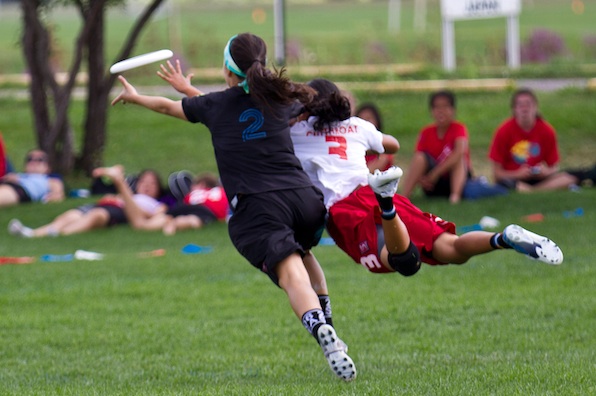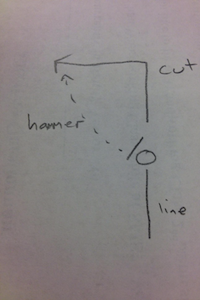
You always mention getting information from outside of the ultimate community, especially about leadership and personal development. Do you have any go-to sources that you keep up with and pull from?
Unlike sports coverage– or even sports analysis– where there is a lot of daily and weekly content, the great works on leadership and personal development are typically old-school, slow-style books more than any website or blog that might be generating daily content. I have some favorites, which I will get to below, but probably more important is mindset.
I spend a lot of time thinking in an unstructured, undirected way. I am the beneficiary of a 40-minute commute and I spend most of those dark mornings listening to music and rolling stuff around in my head. I’ll go back over games and points, think back through conversations or an individual’s play, run through the consequences of various things I’ve read. I write a lot of these posts on the way to work. If you aren’t lucky enough to have a long commute, exercise is another great place to do this kind of mental work. One of the really important things is to stay as open as possible in your thinking. Books or magazines or blogs that you read may not directly touch on ultimate or on sports or on leadership, but there are always connections. As I mentioned last week, I am reading and enjoying Kahneman right now, which is almost specifically not about sports. But it is. Even though it isn’t.
Let the thread of an idea lead you to new resources. Kahneman’s Thinking Fast and Slow has been great, but it is quite possible that two books mentioned in Thinking, Nassim Taleb’s Black Swan and Gary Klein’s Sources of Power will be more helpful. They are my next stops.
Now to actual recommendations. The Harvard Business Review’s 10 Must Reads on Leadership is really great. I’ve gone through all of it at least twice in the three years I’ve owned it, excerpted it for leaders on Oregon, referred back to it for good ideas. It’s just really, really dense with good ideas and thinking about leadership. It is full of business-speak, but so what? The ideas are an easy transfer to any organization. Timothy Gallwey’s Inner Game of Tennis did more for my understanding of the mental framework of my own game and how to help players develop their own mental framework than any other book. It also really challenges the conventional wisdom on learning to throw, which is good, because I think we teach throwing in a very limiting way. I’ll give small shout-outs to Phil Jackson’s Sacred Hoops and Anson Dorrance’s Vision of a Champion. I treat Hoops like a parable – there isn’t a lot of directly applicable stuff in here, but the story of Jackson’s grapple with coaching in his own idiosyncratic way resonated with me. Vision (thanks to Lindsey Hack for the suggestion) has some really thought provoking ideas about coaching women and practical suggestions for using metrics to improve team performance.
~~~~~~~~~~~
I was wondering what you feel are the best pre-game warm drills/exercises to run.
Before I get to specific drills, here are some general guidelines to keep in mind.
- Your entire warm up sequence should be designed to prepare you to play physically and mentally. No individual drill will do this and the overall sequence and pace of warm-ups are more important.
- People typically over-emphasize the physical aspect of warmups and ignore or neglect the mental. A good warmup is a ritual that prepares your mind for the coming competition.
- You want to progress from 70% effort up to 100% and then back down to 90% just before game time.
- As much as you can, physically prepare with a disc in hand. If you wait until you are 100% warm to touch a frisbee, you’ve lost a lot of repetitions.
- Consider splitting your team in half for disc drills. This doubles your touches per minute. I recommend this all the way down to teams of 12. Six people is plenty to run most warm-up drills. Long lines are a brutal waste of time.
- Design a warm up that fits your style of play. Are you a hucking team? Spend more time on this. Are you a defensive team? Spend more time on footwork drills.
Here are some of my personal favorites:
- 3-person marking drill. This is the best single drill in ultimate. It emphasizes the most important foundational two skills – marking and breaking the mark – it is competitive and physically demanding. What’s not to like?
- 20 minutes of unstructured throwing. This is a tough drill for younger players because they don’t really know how to use twenty minutes and often devolve into chat-throwing, but for your veterans and big-time throwers, twenty minutes to throw is wonderful. By the end of my time with Sockeye, I had 8-10 throws I expected to use every game and another 8-10 I might use. (This is not atypical for club-level throwers.) It takes a while to warm all those up, suss out the weather conditions and mental framework.
- A progression of straight on to straight on + cut to straight on + cut + marker. This is a lovely build from 80% to 90% to 100% intensity. Like the 3-person marking drill, it emphasizes foundational skills – throwing, marking, cutting, catching. If you’ve split your team, you can get 10-20 reps in a very short amount of time.
- Oregon’s hammer drill. The motion is a simple flare-cut, hammer, flare-cut, blade. In addition to practicing the most under-utilized throw in women’s ultimate, it’s a great catching drill for warming up hands and feet. Taking this back to the guidelines above, this drill is also a perfect fit for how we want to play offense – loose, carefree and unconventional.
~~~~~~~~~~
Omnivore
The literary magazine The Sun has a wonderful little essay this month about the rugby career of Rose Whitmore. (It isn’t available on-line without some hassle.) As someone who made a lot of the same choices for a lot of the same reasons and suffered a lot of the same consequences, I was moved by her story. Every now and again you run into something that really makes you look at the foundations of things – this essay did that for me.
Got questions? Send them, along with any comments you’d rather not post here, to lou@skydmagazine.com
Feature photo by Nick Lindeke (Ultiphotos.com)








Comments Policy: At Skyd, we value all legitimate contributions to the discussion of ultimate. However, please ensure your input is respectful. Hateful, slanderous, or disrespectful comments will be deleted. For grammatical, factual, and typographic errors, instead of leaving a comment, please e-mail our editors directly at editors [at] skydmagazine.com.